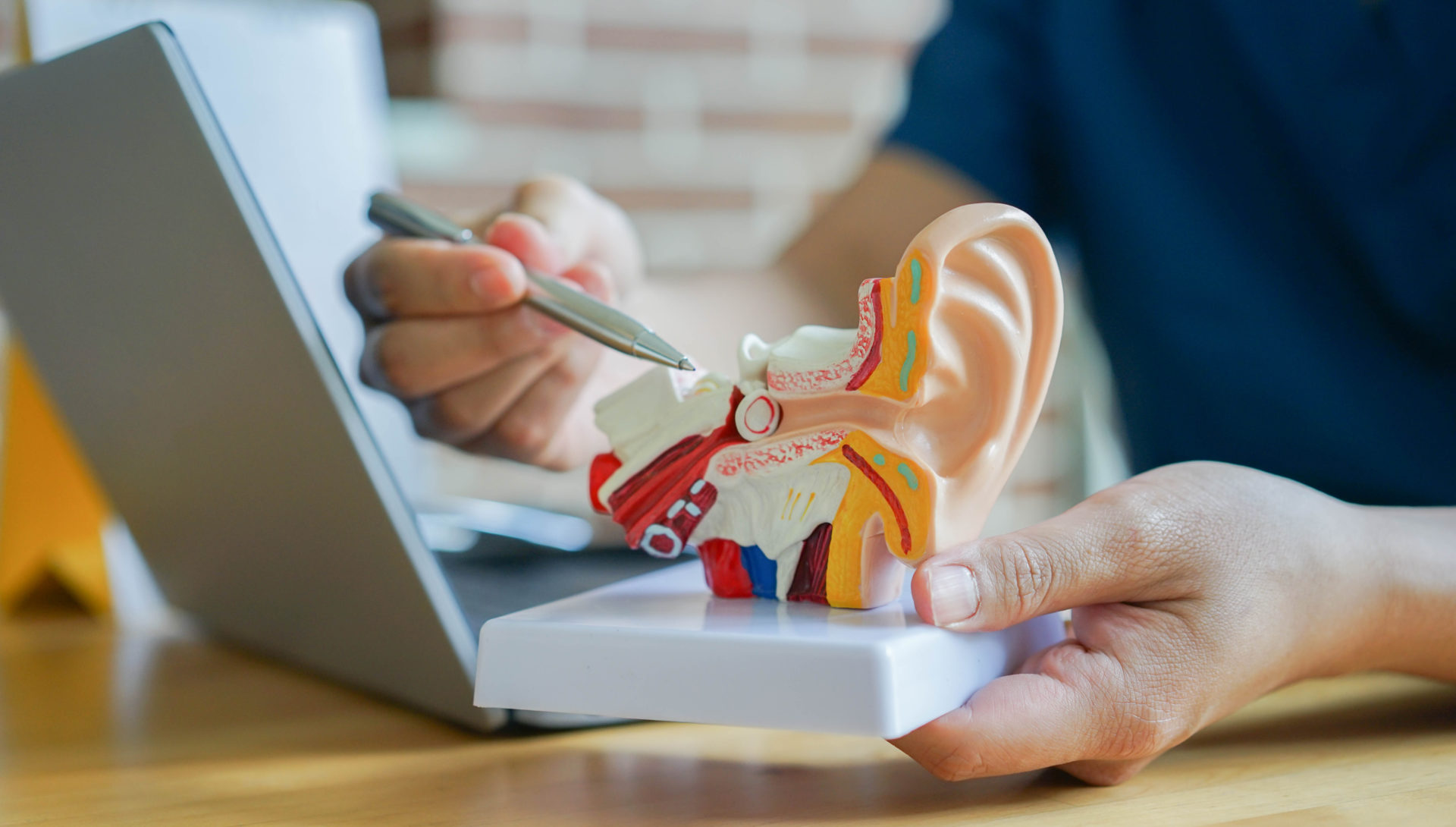We are born with around 3,500 inner hair cells and around 12,000 outer hair cells on our ears. With age, these hair cells naturally grow and fall out over time which can cause a loss of hearing. Certain events can act as a catalyst for this happening and therefore cause hearing loss to occur at a younger age.
Another cause of hearing loss is a blocked ear, naturally, we build ear wax in our ears through various oils and dead skin cells. This also acts as a natural defence against bacteria entering our ears. In this blog, we will be exploring what causes hearing loss in more depth along with the symptoms, causes, treatments and how you can prevent hearing loss.
Symptoms of hearing loss
Sometimes it can be difficult for you to tell if you are suffering from hearing loss or not, and someone else may spot it before you do. There are various symptoms you may undergo if you suffer from hearing loss so we can help you recognise the signs. Multiple symptoms may also indicate the type of hearing loss you are suffering from. The most common symptoms found in people living with hearing loss include:
- Misunderstanding people or having difficulty hearing what someone is saying to you making it difficult for you to communicate.
- Often asking others to repeat themselves when speaking.
- Turning up the volume on your devices to a louder volume than usual.
- Often getting stressed or annoyed when having to concentrate on listening to someone when they speak to you.
If you find yourself having one or more of the following symptoms then please contact us as soon as you can to book an appointment for a hearing test. We will be happy to take a look at your ears and solve whatever may be causing your hearing loss. If you have not been for a hearing test before, you can read through our blog ‘Booking your first hearing test: What to expect’.
In circumstances where hearing loss is caused through a blockage of ear wax, the symptoms may differ slightly. Some of the most common blocked ear symptoms include:
- Irritation or itchiness inside the ear.
- A blocked sensation inside the ear.
- Dizziness (can be caused by ear wax pushing onto the eardrum),
- Hearing loss,
If you believe to be suffering from any of these symptoms you can book an ear wax removal appointment through the link.
Causes, treatments and prevention
There are three main categories of hearing loss. These include sensorineural hearing loss, conductive hearing loss and mixed hearing loss. In this section, I will be explaining each of these categories in further detail so you can understand your hearing loss further.
Sensorineural hearing loss
Sensorineural hearing loss (SNHL) is caused by damage to the inner ear, it is currently the most common form of hearing loss affecting over 90% of adults. Our eardrums can handle sounds up to 85 decibels without any damage being caused, sounds over this threshold can cause damage and result in hearing loss.
Although this may damage hairs inside the ear hearing loss is often detected at a later age since it takes up to 30-50% of these hairs to be damaged for hearing loss to start becoming noticeable.
SNHL isn’t life-threatening and can be treated in addition to being prevented as well. There are various ways it can begin as it is a congenital condition which means it can be present from birth. Therefore, if many of your family members suffer from hearing loss you could also be carrying the same condition. Yet, as previously mentioned it can also be caused by environmental factors as well when we expose our ears to loud noises.
Types of Sensorineural hearing loss
There are three types of sensorineural hearing loss as it can affect one ear both depending on the cause and severity. These include:
- Bilateral SNHL – this can be caused by a variety of things such as genetics, loud sounds and diseases such as measles. This type of SNHL affects both ears.
- Unilateral SNHL – this type only affects one ear and can be caused by diseases, a tumour or sudden loud noise damaging the ear.
- Asymmetrical SNHL – this is where both ears are affected yet one is more severe than the other.
SNHL treatments vary from modern hearing aids which are able to match your specific hearing loss needs. They are able to do this as an audiologist can discover which frequencies you struggle hearing and therefore, give you a hearing aid to support these frequencies. Another treatment is a cochlear implant. This is a device which is surgically implemented in the ear to help you with more severe hearing loss. Although the implant will be inside the ear you will also wear a microphone behind your ear which sends electrical information from your surroundings to the implant.
SNHL can also be prevented so that when you reach an older age your ears are still in a healthy condition. You can do this through:
- Keep the volume in your earphones under 60 percent or under 85 decibels.
- Wearing earplugs if you are in a loud environment for an extended period of time. Booking regular hearing tests to keep an eye on your ears’ health

Conductive hearing loss
Conductive hearing loss is when the sound cannot physically travel through your middle ear into your ear canal. Therefore, the full sound not being carried fully through your ear results in hearing loss.
There are a number of reasons this can happen and it is often due to external factors rather than inner ear damage. The most common reason is a blockage of ear wax that has built up inside the ear canal. Our bodies naturally produce ear wax, yet, sometimes this does not pass through the ear and becomes blocked. This could be due to a person having a narrow ear canal which makes it difficult for the wax to pass through. Another reason could be that a person has a lot of hair in their ears making it difficult for the ear wax to pass without sticking and becoming blocked.
Another reason conductive hearing loss occurs can be through a swimmer’s ear also known as otitis externa. This is when a person is suffering from an ear infection which could be caused by too much water exposure or cotton swab use. The infection can cause swelling inside the ear making it harder for sound to travel to the ear drum.
The best treatment for a blocked ear is microsuction removal, a simple procedure to help remove ear wax from inside the ear canal. Microsuction works through a small device which is placed inside the ear canal to act as a vacuum in slowly suctioning the ear wax out of the ear canal. This technique is completely painless and can provide great relief to those suffering from a blocked ear.

In cases where an infection is present, it may be recommended to finish any prescribed medication before receiving any microsuction treatment so that no more irritation is added to the ear. However, if it is the ear wax causing the irritation and infection an audiologist professional can assess your ear first to determine whether microsuction is able to be performed.
The microsuction device has a camera attached with pinpoint accuracy so an audiologist can clearly view the whereabouts of the ear they are and where to locate any ear wax so they can ensure to not come into contact with the skin. However, even if the device does come into slight contact with the skin it won’t cause any pain only a slight tingling sensation.
Conductive hearing loss can be prevented by making sure your ears are dry after swimming, bathing or showering as the water can provide a good environment for bacteria and germs to grow – leading to infection. For those who are prone to ear wax blockages, it is important to avoid using things such as cotton buds – which push the ear wax further into the ear canal. Although, it can still be useful to book annual/monthly appointments depending on the rate of ear wax build-ups so you can be sure your ears are cleaned without too long periods of time in between.
If you would like to book an appointment click the link or call us at 0121 321 3153.


